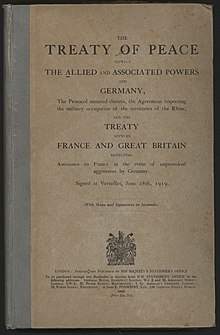LAD/Blog #32: Wilson's 14 Points of Peace
LAD/Blog #32: Wilson's 14 Points of Peace
Woodrow Wilson first proposed his 14 Points of Peace to Congress on January 8th, 1918. This plan was to promote peace, and was later used in the Treaty of Versailles following the Great War. However, Wilson's points were idealistic to a greater extent than they were realistic. This is because they were much too lenient in regards to punishing Germany, especially when other Allied countries wanted large repercussions for the Germans (ultimately seen in the War Guilt Clause). Additionally, the Treaty of Versailles (which was based off of Wilson's points in a way), failed, proving that his ideas were idealistic. Also, Wilson could not guarantee certain aspects of his 14 Points including the removal of economic barriers or the use of the League of Nations by all countries (his fourteenth point; the US itself wasn't even a part of it- the Senate denied the Treaty of Versailles), proving how his ideas were too idealistic.

Wilson's 14 Points

Treaty of Versailles (synthesis):
The Treaty of Versailles was based on the principles of Wilson's 14 Points (with a few changes and additions), and was used to end the Great War (although it ultimately failed, and acted as a cause of WWII).
Woodrow Wilson first proposed his 14 Points of Peace to Congress on January 8th, 1918. This plan was to promote peace, and was later used in the Treaty of Versailles following the Great War. However, Wilson's points were idealistic to a greater extent than they were realistic. This is because they were much too lenient in regards to punishing Germany, especially when other Allied countries wanted large repercussions for the Germans (ultimately seen in the War Guilt Clause). Additionally, the Treaty of Versailles (which was based off of Wilson's points in a way), failed, proving that his ideas were idealistic. Also, Wilson could not guarantee certain aspects of his 14 Points including the removal of economic barriers or the use of the League of Nations by all countries (his fourteenth point; the US itself wasn't even a part of it- the Senate denied the Treaty of Versailles), proving how his ideas were too idealistic.

Wilson's 14 Points

Treaty of Versailles (synthesis):
The Treaty of Versailles was based on the principles of Wilson's 14 Points (with a few changes and additions), and was used to end the Great War (although it ultimately failed, and acted as a cause of WWII).
Comments
Post a Comment